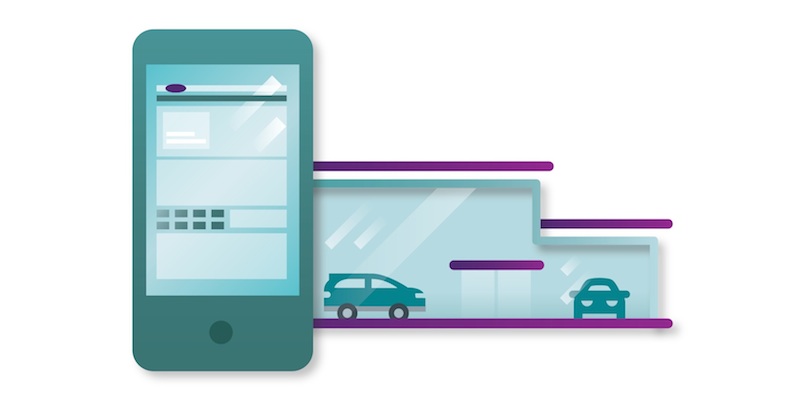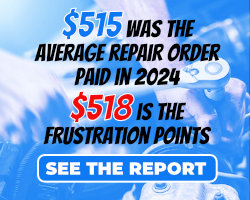If you had to guess, how big would you say your dealership’s showroom is?
Somewhere in the neighborhood of 15,000 or 18,000 square feet, maybe bigger? The front façade is probably in tip-top shape, the last of the 2014s are glistening, perfectly detailed and merchandised online. And I bet it’s full of amenities – lounge areas, a coffee bar, flat-screen TVs, WiFi – all of which help your customers feel at home when they come visit. But that’s not entirely accurate.
The truth is that for one out of every four of your customers, your dealership is far smaller. In fact, it lives on a screen that’s only about five inches wide – a smartphone. I sure hope the espresso maker fits.
Understanding Mobile-Only Shoppers
Earlier this year, we commissioned a study with the research firm Placed Inc. to better understand how car shoppers use their mobile devices during the shopping process, and to learn how mobile affects consumer decisions on dealership lots. What we found is that an astounding 25% of consumers used only a smartphone to do automotive research before visiting a dealership.
Now that’s a radical concept…
Think about it in terms of your own dealership. Say 800 total shoppers visit your store in a given month. Without using a desktop or laptop computer, 200 of them will (hopefully) have come through your doors because of information they found using only a mobile device. They might have read a review, visited your website or found a specific vehicle using an independent research site like Cars.com, but they won’t have arrived because they found you “online” in the traditional sense.
Once they’re there, they may speak with your sales team or test drive a few vehicles, and at some point you can bet they’ll dig into their pocket to verify everything you’ve just told them. But the important takeaway is this: If your dealership doesn’t have a strong mobile presence, those 200 mobile-only shoppers will never walk through your doors in the first place. To them, you won’t exist.
There are more than 167 million smartphone subscribers in the United States today, and it’s largely because smartphones have evolved. They’re not just a fancy way to check email and look up sports scores anymore, they’re a consumer necessity. In just a few short years, they’ve become utility devices, capable of offering a shopping experience that’s as good (or better) than traditional computers.
The Rising Millennial Tide
Millennial car buyers use mobile more than any other demographic. They use their devices to research before they visit, while they’re on the lot to comparison shop, and after they sign their deal to share the experience. Big surprise, right?
All jokes aside, the average Millennial uses his or her smartphone more than 65 hours a month. That’s equivalent to having a part-time job.
Let that sink in.
As you might expect, our research shows that Millennial shoppers do more comprehensive mobile research than older consumers and are more likely to visit additional dealerships because of information gleaned on a mobile device. Though many stores have started to make changes to their sales and follow up process to be more mobile-friendly, there’s still a huge gap in the way most organize their marketing strategy to reach the growing audience of mobile-only shoppers. Few do it from the outset.
Don’t be fooled, this generation is still very much about buying cars, they’re just doing it in ways we aren’t quite as used to. Millennial shoppers simply care about convenience and transparency, and they use mobile as way to get both.

Taking the First Step Forward
It’s hard to change tactics that have worked in the past, but by focusing only on the past you miss out on the future. Check your own site analytics for a year-over-year increase in mobile traffic, read the consumer trends stories, ask your friends and family – mobile is here and growing faster than most can keep up with.
So what can you do about it? Having a mobile-optimized website is a given, but that only scratches the surface in terms of reaching mobile shoppers. Similar to the way display advertising, marketplace sites, search and other digital channels connect your dealership to car shoppers on a desktop, mobile can directly influence consumer decisions and raise awareness for your store. It’s a new frontier, so whether you’re a seasoned marketer or just getting started, always keep these basic questions in mind as you shift new resources to mobile:
- Consistency – Is my marketing message consistent across desktop, mobile and traditional channels? Are vehicles priced differently online compared to what’s on the lot?
While a quarter of consumers are mobile-only, the majority still research on a variety of devices. They expect to have a seamless experience regardless of the platform they are on, so make sure content is consistent, and that landing pages, contact information and creative assets are device-appropriate.
- Audience – How many mobile car shoppers does my dealership currently reach? How do my current marketing channels stack up on mobile? Can I reach more shoppers in my market by leveraging new advertising channels?
Not all audiences are the same, so when making decisions about which mobile channels to prioritize, look to understand the volume and quality of the mobile traffic your dealership is getting from each. As mobile evolves, it’s smart to always be testing new channels.
- Conversion – Are the consumers I’m reaching on mobile in-market to buy a car? How can I influence their decisions?
While consumers can do a lot of things on a smartphone, generally speaking, physically buying a car isn’t one of them yet; shoppers still need to visit the dealership. If the mobile media your dealership invests in doesn’t reach shoppers when they’re closest to the finish line – when they’re shopping on the lot – you’re missing a major opportunity to have a voice in the final step of the buying process, and you’re setting yourself up to get showroomed.
Once you start to answer these questions, put yourself in the shoes of a typical customer. See how your dealership’s advertising looks on an iPhone, Android and a selection of tablets – not just your own website, but everywhere you’re investing resources in mobile. If you can’t find yourself, you can bet your customers won’t either.
3 Quick Things to Do Today
- Verify that vehicle pricing and merchandising information is consistent across all mobile advertising channels. Confirm that the prices you have listed online are the same as what you’re displaying on the lot.
- Test your display ads and phone numbers. Display ads should always click-through to mobile landing pages when viewed on a smartphone or tablet, phone numbers should always be click-to-call without having to pinch to adjust the screen size.
- Look for similar trends in your own web analytics. Pull the “Mobile Overview” report under the “Audience” tab in Google Analytics for a quick snapshot.
Want to learn more about mobile shoppers? Watch the archive of my Navigating Mobile Marketing webinar and take your dealership to the next level with mobile.
What kind of mobile trends are you seeing at your dealership?








